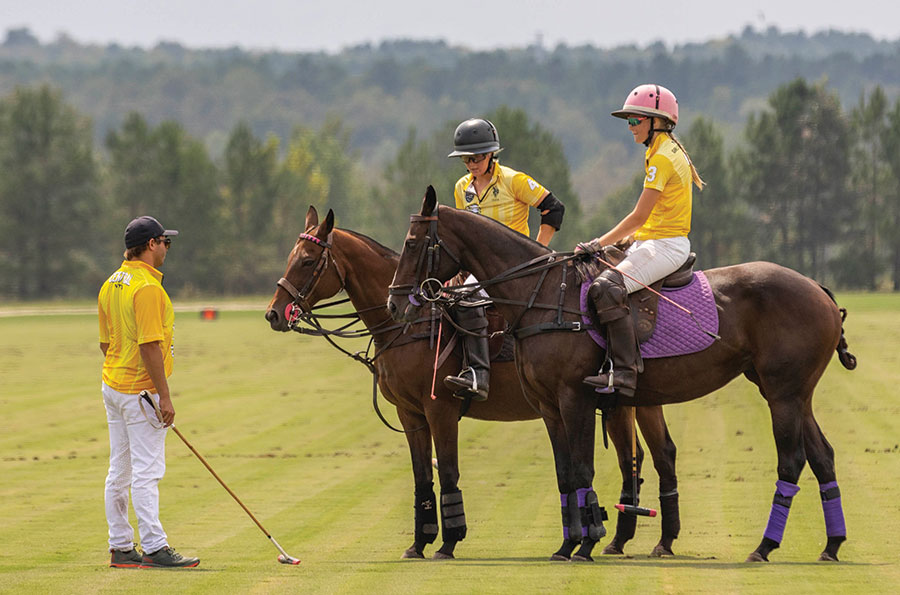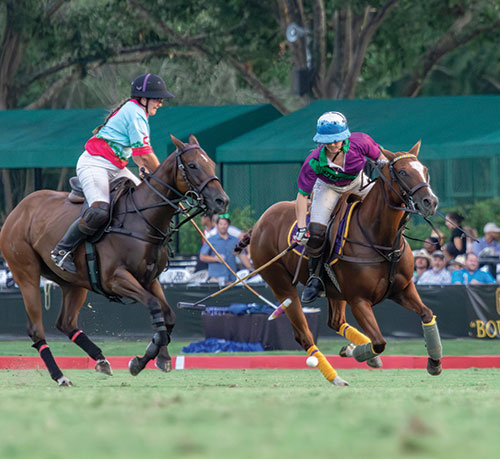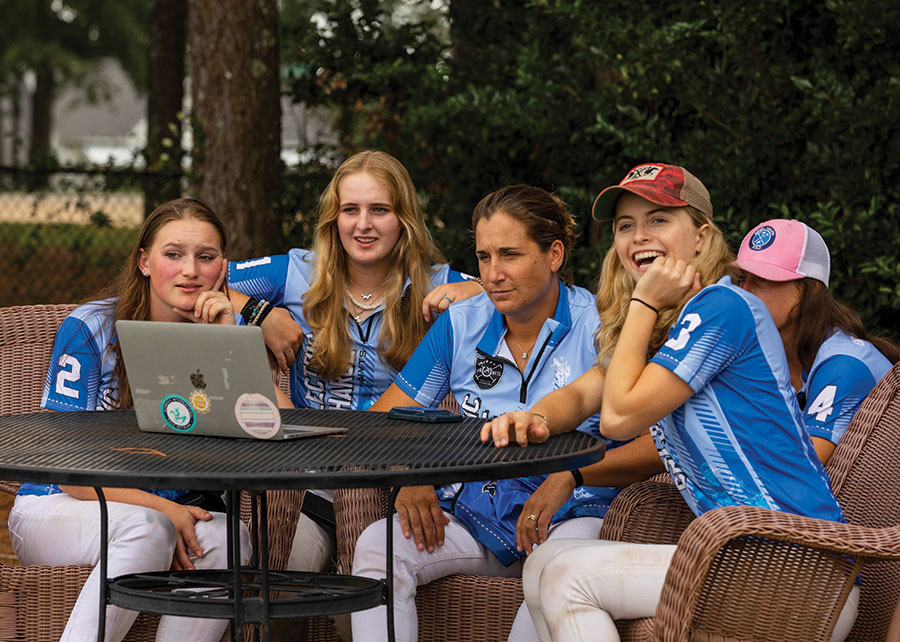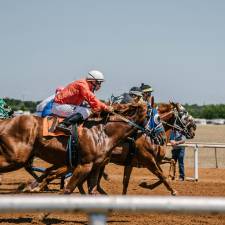
By Caroline Blang
Youth polo continues to grow and evolve in the U.S. The USPA at large and its devoted members, players, coaches and staff are taking the initiative to develop new programming in support of youth polo. The National Youth Tournament Series is just one of many opportunities for junior players to get involved in, but it is uniquely organized to promote introspective personal growth in addition to player development.
“NYTS helps cultivate better players and better humans in society through horses, peers and mentors. The heartbeat of our program is teaching life skills,” says Beth Supik. Supik’s involvement with youth spans umpiring, I/I and NYTS tournament management.
NYTS differs from I/I because players enter qualifier tournaments as individuals. By design, the program forces junior players to have confidence, be outgoing, travel to new places and play with unfamiliar teammates. It teaches juniors to learn how to build team cohesion from the ground up. Additionally, the series is an opportunity to learn composure in a formal setting.
Supik said, “Many of the host clubs showcase the youth games on their main fields that draw large crowds of spectators.”

Photo courtesy of US Polo Association
For many players, learning to play under pressure, working with nerves and displaying maturity in front of the polo community has led to amazing opportunities. Juniors like Naomi Tachibana Marlough and Hanan Fadil, for example, demonstrated integrity and good character, landing them spots on the La Fe team in the U.S. Open Women’s Polo Championship last spring in Florida.
Perhaps one of the most special parts of NYTS is watching the juniors’ life stories unfold over the years. As younger players first start out in the program, they may struggle with being the weakest player on a team, but as they get older and move up in the program, they eventually become leaders, helping teach the next group coming in.
“It’s inspiring to be surrounded by people who can take constructive criticism and turn it into positive action,” Supik said. Supik has first-hand knowledge, having competed in interscholastic polo. She was part of the first all female team to win the Open National Interscholastic Championship in 1998 when she was playing for the Garrison Forest School team. She lights up thinking about how far girls’ polo has come since her victory.
She identifies a short list of female players who have acted as trailblazers, making the sport more accessible and welcoming to young girls: Sunset “Sunny” Hale, Hope Arellano, Hazel Jackson, Kelly Wells, etc. Supik said, “They’re not just talented women who blazed the trail by being successful in their own, personal polo careers, they want to and are giving back to younger girls. That’s the diesel power to it.”
The USPA’s Junior Committee, NYTS subcommittee, and Young Player Opportunity subcommittee meet regularly to discuss current and future opportunities for junior players. Much of that discussion revolves around training availability in the U.S. and Argentina, as well as the best ways to support player advancement. With a lot of crossover between NYTS and I/I tournament managers, USPA staff is able to keep a pulse on trends and challenges in the youth polo space. Youth polo remains strong in the U.S. and the USPA looks forward to continuing and advancing developmental programs for young players.

Photo courtesy of US Polo Association
This article is reprinted with permission from Polo Magazine ©.
You can find more interesting articles in our section on Health & Education and Riding Disciplines.



































